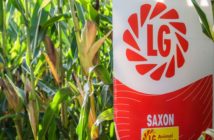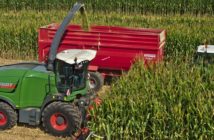A crop of Perseus festulolium silage on a 90ha (220 acre) dairy farm near Tiverton in Devon, has hardly stopped growing this winter, and looks set for an early first cut if the mild weather continues.
“This 10ha (25 acre) field, which has medium soil, was reseeded quite late at the end of April last year,” says John Harris, grassland agronomist for Pearce Seeds. “It was a bit of a gamble but luckily it was a tremendous grass growing year. The field was ploughed and power-harrowed and the Perseus, which is an Advanced Italian Ryegrass bred by DLF Trifolium, was drilled at 16kg/acre.
It was poking its head out just seven to ten days later and was cut three times – the last time being in September. It had one application of 28.0.0.12 fertiliser early on, and chicken dung and slurry throughout the season. It yielded tremendously well – at one point the farmer said there was so much grass he struggled to get it through the mower!”
The 180 cows on this all-grass farm are housed all year round and fed a Total Mixed Ration (TMR), so producing consistently high yields of high quality forage is crucial.
Until last year, just Italian ryegrasses had been grown for silage. But the results of observation plots drilled with four different festulolium varieties gave the farmer confidence to drill a larger area with Perseus – which performed particularly well.
“Perseus is a cross between an Italian ryegrass and a meadow fescue which produces high yields of nutritious forage and regrows vigorously after cutting,” Mr. Harris explains. It also has noticeably better disease resistance – last autumn when the Italian ryegrass was smothered in crown rust, the Perseus was pretty much clean. Perseus also has a much wider leaf than the Italians – which helps it intercept more sunlight which boosts both yield and quality.”



